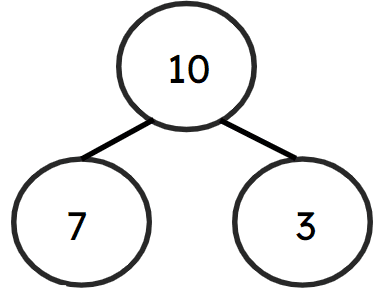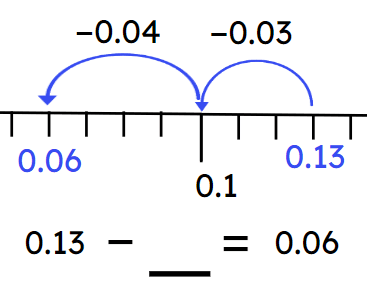Myths about teaching can hold you back
- Year 5
Use knowledge of place value to calculate with decimal numbers up to and bridging one tenth
I can use knowledge of place value to calculate with decimal numbers up to and bridging one tenth.
- Year 5
Use knowledge of place value to calculate with decimal numbers up to and bridging one tenth
I can use knowledge of place value to calculate with decimal numbers up to and bridging one tenth.
These resources were made for remote use during the pandemic, not classroom teaching.
Switch to our new teaching resources now - designed by teachers and leading subject experts, and tested in classrooms.
Lesson details
Key learning points
- 10 one hundredths is equal to one tenth or 0.1
- If 7 + 3 is equal to 10 then 7 hundredths + 3 hundredths is equal to 10 hundredths which is equal to one tenth 0.1
- Number facts and place value can be applied when adding hundredths which bridge one tenth.
Keywords
Number fact - A simple calculation using two numbers.
Bridge / bridging - A mental strategy which uses addition or subtraction to cross a number boundary.
Common misconception
Pupils use a known fact but add or subtract with different place values (e.g. 0.6 + 0.04 = 0.1).
Unitise through the use of language to help identify this for pupils. For example: 6 hundredths plus 4 hundredths is equal to 10 hundredths.
To help you plan your year 5 maths lesson on: Use knowledge of place value to calculate with decimal numbers up to and bridging one tenth, download all teaching resources for free and adapt to suit your pupils' needs...
To help you plan your year 5 maths lesson on: Use knowledge of place value to calculate with decimal numbers up to and bridging one tenth, download all teaching resources for free and adapt to suit your pupils' needs.
The starter quiz will activate and check your pupils' prior knowledge, with versions available both with and without answers in PDF format.
We use learning cycles to break down learning into key concepts or ideas linked to the learning outcome. Each learning cycle features explanations with checks for understanding and practice tasks with feedback. All of this is found in our slide decks, ready for you to download and edit. The practice tasks are also available as printable worksheets and some lessons have additional materials with extra material you might need for teaching the lesson.
The assessment exit quiz will test your pupils' understanding of the key learning points.
Our video is a tool for planning, showing how other teachers might teach the lesson, offering helpful tips, modelled explanations and inspiration for your own delivery in the classroom. Plus, you can set it as homework or revision for pupils and keep their learning on track by sharing an online pupil version of this lesson.
Explore more key stage 2 maths lessons from the Use knowledge of decimals to solve problems in different contexts: length unit, dive into the full primary maths curriculum, or learn more about lesson planning.

Licence
Prior knowledge starter quiz
6 Questions
Q1.Tick the number facts that make 10.
Q2.Ten hundredths are equal to _________.
Q3.Tick all of the equations that can represent this part-part-whole model.

Q4.I know 6 + 3 = 9 so 60 + 30 =
Q5.I know 6 + 3 = 9 so 0.6 + 0.3 =
Q6.Tick the correct equations.
Assessment exit quiz
6 Questions
Q1.I know 4 + 5 = 9 so 0.04 + 0.05 =
Q2.I know 7 − 4 = 3 so 0.07 − 0.04 =
Q3.Which of these pairs of numbers sum to make 0.1?
Q4.Use a known number fact to help you solve: 0.1 − 0.04 =
Q5.Fill in the missing number for the equation represented by the number line.



